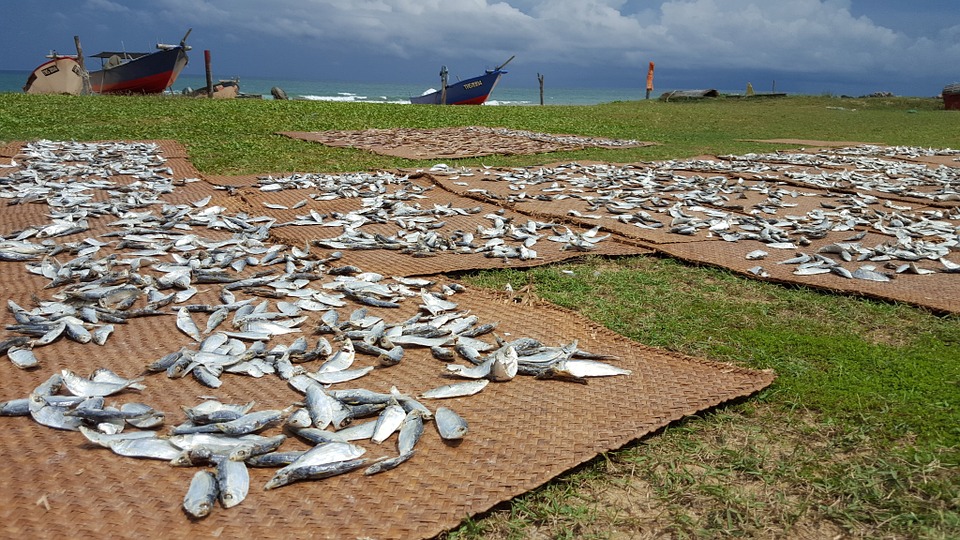WHAT GOA EATS DURING THE MONSOONS
By sanjit Posted 08-05-2021 Architecture
No sooner do the monsoons draw near, than the pantries in Goan households are stocked. That means provisions like coconuts and spices are well packed. Fish and meats, as well as various fruits and vegetables, are sun dried and set aside for pickling.
Even as the strong winds begin to blow and the refreshing rains gush down, there is no stopping Goans from making delicious and heartwarming dishes. Spicy, sweet, salty, you name it! Every dish can get warmed up and get your taste buds tingling in no time.
To give you a taste of Goa, here are a few food items that Goa eats during the monsoons:
DRIED FISH
The monsoons are a time for fish breeding, hence during this period fishing is not encouraged. With no fresh fish available in the markets, people rely heavily on dried fish to get through the rainy months. Some of the commonly found dried fish in homes include bombils (Bombay ducks), dried mackerel and anchovies as well as dried shrimp/prawns. These dried fish are prepared as accompaniments,either being fried on the pan, made into a chilly-fry, sometimes even included in curries, for example, Sukye Sungtache Kodi (dry prawns curry).
While Bombils might be pan-fried, dried mackerel are turned into ‘para’. Para is a delightful blend of vinegar, chilli, turmeric, garlic, and most importantly fused with dried whole mackerels. The fish is cured through the year in earthen pots and is brought out during the monsoon as an accompaniment for meals. The fish is mildly spicy and leaves a tangy taste. Just as fresh prawns are devoured, Kismur, a dried shrimp/prawn dish, is never forgotten at a meal. Prepared as a chilly fry, the dry prawns are soaked in water, later sautéd with onions and grated coconut.
PICKLES
Ranging from sweet and sour to spicy, most pickles have common ingredients which include dark red Kashmiri chillies, spices, vinegar, etc. Yet, every pickle is prepared differently- and has a distinctive taste.
While most pickles are prepared with vegetables and fruits like tendlim (gherkin), brinjals (aubergine), and mango. Some fish like kingfish and mackerel are also made into pickles called Molho, others like prawns/shrimps are made into balchão. These too are served as a side dish with any meal and are relished.
VONN
Vonn is a traditional Goan dessert, made from coconut milk and palm jaggery. It is prepared by extracting coconut juice, cooking it with rice flour, and subsequently adding gram dal and palm jaggery. Finally, on attaining a thick consistency, the dish is garnished with a few dried fruits. Overall, it’s a rich, healthy dish which is thoroughly enjoyed on a rainy day.
PATOLEO
The speciality of a patoleo lies in the turmeric leaf (saffron leaf). Patoleo is a turmeric leaf-stuffed wrap. It is prepared by applying a thin rice paste on a fresh turmeric leaf. In the centre of the rice paste, a little filling of coconut and jaggery is added for flavour. The leaves along with the filling are steamed. While eating, the leaves are peeled off before consumption. Patoleos have a mild sweetness, thus are best had warm at tea time.
CHORIS
Goan pork sausages, better known as ‘Choris’, is another speciality of Goa. Tiny beads of fat saturated Goan pork sausages are prepared by combining pork with dried red chillies, spices and strong vinegar. This mixture is stuffed into guts/intestines and is then cured for a while.
Choris is considered to be versatile as it’s used to prepare various kinds of dishes. From stews to pulao, even toss in a few beads of Choris in an otherwise mundane curry, you get an improvised new dish. But best of all is the popular Choris PaÅ. Pork sausages are sautéd with sliced onions, whipped into a quick chilly fry. This, when stuffed into goan bread ‘poiÄ“’ makes for a delicious snack. The spicy and savory meat combined with a mildly sweet poiÄ“ is a perfect combination on a rainy day.
SATTAM
Saath or Sattam (fruit leather) is a common rainy day snack which is prepared from jackfruit. Originally, there were two kinds of Jackfruit - the softer ‘rassal’ and the firm ‘kappo’. From the two, Sattam is prepared from the soft rassal jackfruit which is de-seeded and the contents are blended into a paste. This paste is sundried for 5-6 days until it turns into a thick and chewy toffee-like treat. It is typically eaten during the monsoon months when you have a craving for the fruit.
If you’re searching for comfort food to fulfil your cravings, Goa has a variety. Read our blog posts about the delicacies enjoyed on Shrove Tuesday and about traditional Goan Diwali sweets. Life in Goa is best enjoyed in the comfort of a Kasu Home, located in quaint villages where you can experience local food, festivals and daily life unfolding.
This site uses Akismet to reduce spam. Learn how your comment data is processed.


